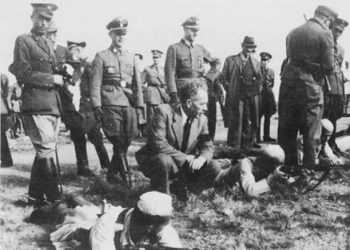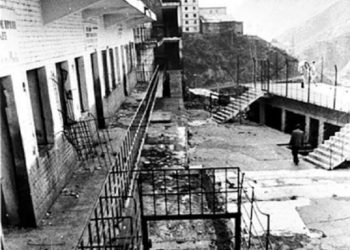By Selatin Novosella
– “The status of the Republic of Kosovo was supported by well-known intellectuals: Gazmend Zajmi, Fehmi Agani, Ali Hadri, Syrja Pupovci, Mark Krasniqi, Hajredin Hoxha, etc.” –
Memorie.al / The year 1968 have already entered world historiography as the “year of demonstrations”. This can be said about the fact that during this year demonstrations took place all over the world as well as in some cities of Yugoslavia and in the Albanian areas under the administration of this state.
The demonstrations of 1968 in Czechoslovakia, after the invasion by the ‘Warsaw Treaty’!
The ‘Warsaw Pact’, which was a political-military union of the Soviet Union, Czechoslovakia, Poland, Hungary, Romania, East Germany, Bulgaria and Albania, will intervene, respectively, I will militarily occupy Czechoslovakia, in the summer of 1968, as opposition to a liberal movement in this country. The freedom-loving people of this country will rise in mass demonstrations in opposition to this unprecedented act when an alliance invades its member!
Although there were many citizens of Czechoslovakia who were drowned, wounded, tortured and imprisoned by the Soviet “allied” army, however, it will be the heroic act of the student Jan Pallah, who, as a sign of protest, would go out in front of the Russian tanks, in freedom-loving Prague, and will burn it with gasoline!
Although Albania had withdrawn from the ‘Warsaw Treaty’ in 1961, after this classic invasion of one of the “allies” of this most powerful formation in the world, before the North Atlantic Pact, namely, NATO, Albania, as a sign of disagreement and protests , eventually, will abandon this alliance.
1968 demonstration for racial equality in the US and against the war in Vietnam
During this historic year, in 1968, the USA was seething with protests, strikes and demonstrations of millions of blacks in America, demanding the denied political, social and cultural rights. At the forefront of this movement, Martin Luther – “The King” – was placed, transforming into a metaphor for the freedom-loving man. Parallel to this mass movement, the mass demonstrations, especially of American student youth, against the war in Vietnam continued.
Bill Clinton, the later president of the USA and ardent supporter of the decision to bomb Serbia in 1999, in defense of Kosovo’s freedom, will stand out among these demonstrators. Clinton’s biographers will emphasize that during the campaign for the presidential elections in the USA, on the occasion of Clinton’s election as president; he will be accused by his rivals of having “betrayed the interests of the American state” because he was at the forefront of the demonstrations in 1968, and had also opposed his going to war in Vietnam.
Student youth demonstrations in Western Europe in 1968
The student youth of the democratic states of Western Europe, in the big year, 1968, had resolved the issue of national freedom, the issue of democratic systems, the issue of social rights, etc. With the slogan of the time for “left liberalism”, the student youth of Western Europe, especially that of France, Great Britain, West Germany and Spain, will transform into a mass movement unseen after the Second World War.
Especially the universities of these countries will turn into arenas of fights and skirmishes with law enforcement agencies. Many universities would be closed, demonstrations will be held in the main cities of these countries, powerful barricades will be made in the streets and crossroads of the capitals, in Paris, London, Berlin and Madrid.
Among the demonstrators and at their forefront will be: in Paris the writer and philosopher, Jean Paul Sartre; in London also Tony Blair; in Germany also Joshka Fisher; while in Madrid Javier Solana. The saying: “chance is the king of the world”! In the case of Kosovo Albanians, it is fully verified. (In the decisive moments for the fate of Kosovo, during 1999, when the Albanian being in Kosovo was endangered like never before, it will be precisely these four world leaders, the rebellious students of 1968, Bill Clinton, Tony Beller, Javier Solana and Joshka Fisher, who will be the decisive “quartet” for the decision of NATO’s intervention against the murderous Serbian army).
Regarding the level of organization, the massiveness and the uprising of its kind during this year, 1968, let us emphasize here a significant moment. In the situation when the student youth in Paris were joined by many workers and citizens, in which case it was said that the number of participants exceeded one million, when the French government was also in danger, General Charles De Gaulle will be transferred by military plane, to a NATO base in West Germany.
The demonstration of 1968, in the cities of Yugoslavia
After the fall from power of Aleksandr Ranković, on July 1, 1966, the Minister of Internal Affairs of Yugoslavia, the UDB, and among the closest and most trusted associates of the Yugoslav leader, Josip Broz Tito, a kind of liberalism was felt throughout areas of Yugoslavia, which had never happened since the Second World War.
In such circumstances, but also taking as an example the mass student movement of 1968, all over the world, as it was pointed out in which countries, even in the capital of the Yugoslav state, in Belgrade, and in the capital of the Republic of Croatia, in Zagreb, during this year, student youth demonstrations will be organized and held. Especially those in Belgrade were very massive and powerful.
The mass of tens of thousands of students of the University of Belgrade, in the summer of 1968, had mercy on the state-government facilities of Belgrade. Demonstrators were blocked on one of the main bridges of the Yugoslav capital. The police, reinforced with special units, had not allowed the demonstrators to cross the Bridge over the Sava River. Witnesses of the time say that it will be decisive for the students not to continue the meeting with a personality of the time, Vellko Vllahovic, a former fighter of the Volunteer Brigades of the Spanish Civil War.
The words of this well-known fighter and the authority he enjoyed among the student youth of Belgrade will prevent them from turning into a scuffle and fight between the youth and the Yugoslav police, the end of which fight will not be known. !
The demands of Albanian politicians and intellectuals in 1968, for the advancement of the status of Kosovo at the level of a republic in the former Yugoslavia
Since the year of the declaration of Albania’s independence, on November 28, 1912, in which case almost half of the Albanian territories, with the same population, had been left outside the ethnic Albanian trunk, a new political trend had arisen in the political life of the Albanians, previously unknown, the irredentist current, which aimed for the territories remaining outside the political borders of Albania to be liberated and reunited with it. This political movement, which will initially have the prominent ideologue Hasan Pristina as its symbol, will organize its activity sometimes with political means and sometimes with military means, with the aim mentioned above.
This will be the case until the period of the Second World War, 1939-1945, when the Albanians of the entire national space, i.e. not only of nationalized Albania, but also the Albanians of Kosovo and beyond, will line up with the anti-fascist alliance, led by the Soviet Union, Great Britain and the United States of America. This is happening, so, not only to free Albania from fascist and Nazi occupation, but also so that in the new historical circumstances, after this war, the territories outside the mother country would be reunited with it.
Therefore, with this aim, the Assembly of Bujani will be held, where, in the well-known statement, it was said that; after the liberation of the areas of Yugoslavia, inhabited by many Albanians, i.e., also Kosovo, would join Albania according to the international right of self-determination. The results of this war and its consequences are already known.
Even after the reconquest of Kosovo by the Chetnik-partisan forces, in the wild winter of 1944-’45, the efforts of the Albanians of Kosovo and other countries will not be stopped for a moment. To achieve the goal of the Irredentist Movement, Albanians form many groups, organizations and political parties, which, without exception, are organized and operate in deep secrecy. Therefore, this period of patriotic-political activity will enter the historiography as “Illegal Patriotic Movement”.
This Movement, with all its ebbs and flows, with all its ups and downs, however, was never interrupted. If I refer to the historical data, it turns out that in the post-LDB period, although Albanians in Yugoslavia constituted about 20 percent of the population, the number of imprisoned Albanians was about 70-80 percent, out of the total number of political prisoners in the former Yugoslavia.
In 1968, as mentioned before, as a result of the struggle for power and as a result of the conjunctural changes of the Yugoslav leadership, it came to the fall from the top of the highest power of Aleksandar Ranković. Although all the crimes that Rankoviqi had planned, organized, led and carried out against the Albanians, he had carried out in close agreement and coordination with Tito, however, Tito will play the well-known card in politics, of washing his hands from the crimes, in which he himself had participated.
Thus, to prove to the Albanians that this was their “savior” and that what had happened during the action of collecting weapons from them, as well as the unprecedented pressure for the Albanians to move to Turkey, Albania and the destruction in other areas of Yugoslavia, now, in 1968, Tito had formed Commissions for Constitutional Amendments in the six republics of Yugoslavia (Serbia, Croatia, Slovenia, Bosnia and Herzegovina, Montenegro and Macedonia) as well as the two provinces in (Kosovo and Vojvodina ).
This Commission, in Kosovo, was led by Fadil Hoxha – president of the then Assembly of Kosovo. After the opening of discussions on constitutional changes, in 1968, many gatherings were held in municipal committees all over Kosovo, as well as at the levels of science institutions, but also at the lower levels of local government. Initially, in these gatherings, the advancement of the status of the Province of Kosovo at the level of the Republic was requested.
It was also requested that at the level of the Yugoslav federation, the provinces of Kosovo and Vojvodina should be represented with the same number of delegates, at the level of the Federation, as well as the republics of Yugoslavia: Serbia, Croatia, Slovenia, Bosnia and Herzegovina, Macedonia and Mali black. What is even more important, the right of self-determination for Kosovo was also demanded. These discussions had continued until the summer of 1968. Historiography has the task of studying and researching the documents of the time to ascertain why these discussions were interrupted?!
After the interruption of the discussions at the party and state levels of Kosovo regarding the doubt of the future status of Kosovo, the well-known personalities of science and knowledge in Kosovo were included in these discussions. In these proposals and discussions will stand out, especially: Gazmend Zajmi, Fehmi Agani, Ali Hadri, Syrja Pupovci, Mark Krasniqi, Hajredin Hoxha, etc. Calling on historical arguments but also on political processes and events from the past, these intellectuals will try to argue that; Kosovo had the right to be declared a republic.
After a short period of time, even these intellectuals will remain silent; some of them will even deny their previous statements about the advancement of Kosovo’s status at the level of the republic of the former Yugoslavia. What applies to the evaluations of historians and analysts about the interruptions of the positions of Albanian politicians, the same applies to the evaluations and the positions of intellectuals why they withdrew from the request and the historically right position for the advancement of the constitutional position of the Province of Kosovo at the level of Republic?!
Demonstrations of 1968 in Kosovo and other Albanian countries in the former Yugoslavia
As it was emphasized before, the National Liberation Movement in Kosovo and the other Albanian countries in the former Yugoslavia had never stopped trying to realize the main demand of the Albanians – reunification with the mother country Albania. However, the year 1968 in Kosovo will bring a new spirit and a slightly different attitude that was an exception to the political programs of the National Movement until then, and this was the attitude to seek the Republic of Kosovo within the former Yugoslavia, anyway, as an initial step for the realization of the formation of the independent Republic of Kosovo.
In 1968, a formation of the patriotic organization ‘Revolutionary Movement’ for the Union of Albanians, which was founded by Adem Demaçi in 1963, was operating in Pristina. This formation was mainly composed of members of the Youth Group of the LRBSH- of which in 1964, they had acted in that organization, for which they were sentenced to short sentences and were expelled from the secondary schools where they were studying. Already, in the summer of 1968, this group will reorganize and provide the opportunity to advance in patriotic-political activity. The core of this formation was: Osman Dumoshi, Ibrahim Gashi, Adil Pireva, Shemsi Hoxha, Ilaz Pireva and Selatin Novosella.
After the dilemmas and concerns that were created in the political opinion of Kosovo, after the withdrawal of politicians and intellectuals, from the demands for the status of the Republic of Kosovo, precisely in these political circumstances the definitive decision will be made to organize demonstrations in Pristina and in what more cities of Kosovo. This idea would receive support and encouragement from the prominent intellectual Ismail Dumoshi, who was in close relations with some political and intellectual leaders of the time. After the conclusion of Ismail Dumoshti that all possibilities for the advancement of Kosovo’s political level, in the institutional line, have been cut off, the final decision is made that this advancement of Kosovo’s political status should be sought through means of political pressure, through mass demonstrations.
Demonstrations held all over the world, with special emphasis in the countries of Western Europe and in some cities of the former Yugoslavia, as well as the demonstrations held in the three cities of the Dukagjin Plain, in Prizren on October 6, in Theranda on October 9 and in Peja on October 19, it was bravery, courage and a strong push to raise the level of organization in Pristina and not wait any longer. For this purpose, several meetings will be held, in deep secrecy, of the Youth Group of the LRBSH, which had already expanded with new members. In these meetings, which will be held in different houses, avoiding the prying eyes of the UDB, the following decisions will be made:
Group members are appointed for consultation with veterans of the National Liberation Movement: Osman Dumoshi with Kadri Halim, Hasan Dërmaku with Metush Krasniqi and Selatin Novosella with Hyrije Hana; The members of the Group are appointed for the coordination of organizational actions with other cities of Kosovo: in Podujeva – Xheladin Rekaliu, in Ferizaj – Skënder Kastrati and in Gjilan – Asllan Kastrati; The date of holding the demonstrations in Podujevë, Gjilan and Ferizaj is set for November 27, at 12:55 p.m., while in Pristina, on November 27, at 4:55 p.m.; The texts of the 50 banners that will be written and chanted during the demonstrations in Pristina are determined: Skënder Muçolli, Afrim Loxha and Ilaz Pireva;
The authors who will write, read and type the speech that will be read in front of the demonstrators in Pristina are appointed: Adil Pireva and Osman Dumoshi will write it; Ismail Dumoshi will read it, while Selatin Novosella will type it;
The persons who would read the speech during the demonstrations are appointed: Osman Dumoshi and Hasan Dërmaku; The persons who would transport the banners and flags, from the place where the banners were written, to the Faculty of Philosophy facility, in Pristina, from where the demonstrations would start, are appointed; The date of the next meeting is set, after the end of the demonstrations, on November 30.
All these assigned tasks will be carried out with almost military discipline. The proposals, suggestions and ideas given by Kadri Halimi, Metush Krasniqi and Hyrije Hana, through the persons designated by the Youth Group, will be strong support and help of great interest for the progress, organization and development of the demonstrations, especially those of in Prishtina.
Thus, the prominent activist, Hyrije Hana, former partisan, former political prisoner from the Yugoslav government in 1961 and sister of the martyr Xheladin Hana, in the last meeting, just five days before the demonstrations, gives these proposals to the organizers, through Selatin Novosella :
Do not write slogans:
– “We want the Republic of Kosovo”!
– “Down with Fadil Hoxha”!
– “Long lives Enver Hoxha”!
– “Down with Josip Broz Tito”!
The slogans are written:
– “We want self-determination until secession”!
– “The National Liberation War, you have not brought us equality”!
– “We demand the union of other Albanian countries in Yugoslavia, with Kosovo”!
– “Down with Veli Deva”!
– “Down with Misha Sekullovici”!
While the organizers of the demonstration will decide to write these slogans:
– “We demand the free use of the national flag”!
– “We are looking for the University of Pristina”!
– “We demand better conditions for students”!
– “Better death than captivity”!
– “In one hand the pickaxe – in the other the rifle”!
– “Long lives the working class”!
– “Long lives the peasantry”!
– “Freedom for political prisoners”!
– “Long lives Adem Demaçi”! etc.
Demonstrations in Podujevë, Gjilan, Ferizaj and Mitrovica would take place, according to the planning, co-organization and coordination between the organizers of these cities and the center in Pristina, in the morning hours of November 27, 1968, while a large number of demonstrators from these cities, where demonstrations were held, but also from other cities of Kosovo, will join the main demonstration in Pristina, at 16:55.
From the beginning of the demonstration in Pristina, at the appointed time, 5 minutes to 4 p.m., until their conclusion at around 10 p.m., it would be a national manifestation – political, massive, dignified, courageous, determined and all popular. Of all the slogans prepared in advance by the organizers, whether written on banners or in the specially prepared speech, the slogans will be chanted the most:
– “We want the Republic of Kosovo”!
– “We want self-determination”!
– “We want the Constitution of Kosovo”!
Despite the planning and the desire of the organizers of the demonstrations to avoid a confrontation with the law enforcement agencies, the police, however, this will happen after the police attack with firearms, tear gas and water cannons. During these demonstrations, the 17-year-old student Murat Mehmeti would be killed, over 20 demonstrators would be injured with firearms and hundreds of others would be injured during the clashes and clashes between the demonstrators and the police.
After the complete successful completion of the demonstrations in the three cities of the Dukagjin Plain, in Prizren, in Therande and Pejë and in the cities of the Kosovo Plain – in Pristina, Podujevë, Ferizaj, Gjilan and Mitrovica, punitive measures would be taken repressive bodies of the State Security, UDB, Misdemeanor Courts, Municipal and District Courts all over Kosovo.
After the demonstrations, hundreds of demonstrators would be punished with short sentences by the courts for misdemeanors, while around 30 organizers of the demonstrations would be tried by the municipal and district courts, with sentences of up to 5 years in prison, which had not happened in no other country in the world, nor in the cities of Yugoslavia, in Belgrade and Zagreb, where there had been demonstrations. Even though during the demonstrations of 1968, the streets and squares of the cities of Kosovo were bloodied, even though the prisons were filled with Albanian political prisoners, nevertheless, with these well-known historical events, a new chapter was being opened in the long history and of Kosovo. With these demonstrations, the demand for the Republic of Kosovo was legalized.
The demonstrations of 1968 would be a powerful link connecting well-known historical events, such as the Anti-Fascist National Liberation War, 1939-1945, the National Liberation Movement, known as the Illegal National Movement, 1945-1968, with even more important events that will follow these demonstrations, such as the 1981 demonstrations, the Peaceful Political Movement, 1990-1997, culminating in the glorious war of the Kosovo Liberation Army, which, being fully and strongly supported by the NATO Alliance s, under the leadership of the USA, brought freedom to Kosovo.
Although a month late, a very powerful demonstration also took place in Tetovo. There, the city was held in the hands of the demonstrators on December 22 and 23, 1968. In solidarity with the demands of the demonstrations manifested in the Kosovo demonstrations, the demonstrators of Tetova, but also of several other Albanian cities in Macedonia, demanded the realization of their rights cultural, social and political denied by the Macedonian government. After the Albanian demonstrations in Tetovo and other settlements, the revenge of the Macedonian chauvinist government was very fierce against the demonstrators. That revenge was incomparably more ferocious than that of the leadership structures in Kosovo, which was exercised against the demonstrators.
The direct results of these demonstrations, taking into account the historical events developed until then, but also the contribution of the leading structures of the time, were:
Allowing the free use of the national flag and the opening of the University of Pristina.
Resumption and start of work of scientific institutions in Kosovo. The beginning of intensive cooperation between Kosovo and Albania in the fields of education, science and culture. Approval of the Constitution of Kosovo of 1974. Memorie.al




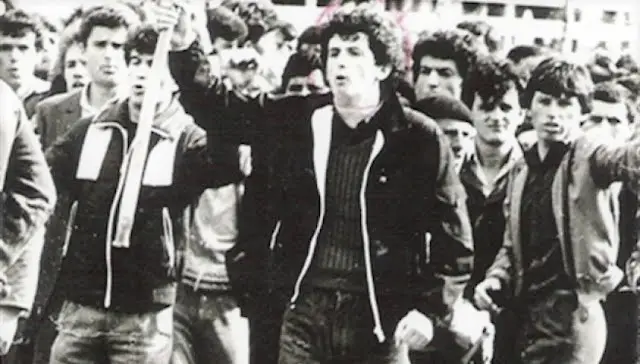
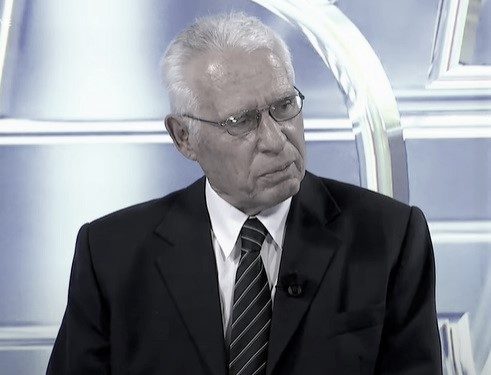
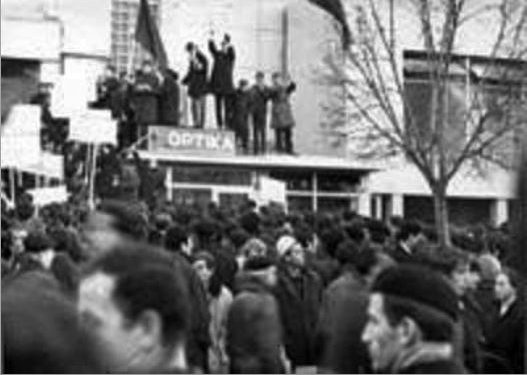
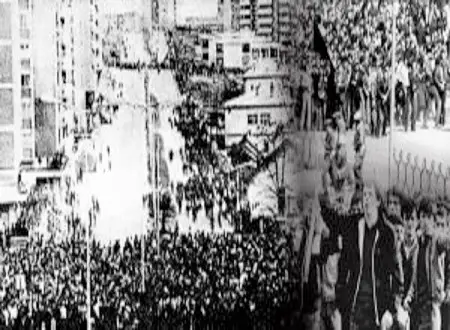
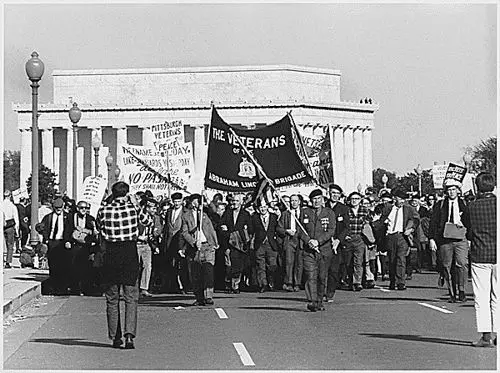

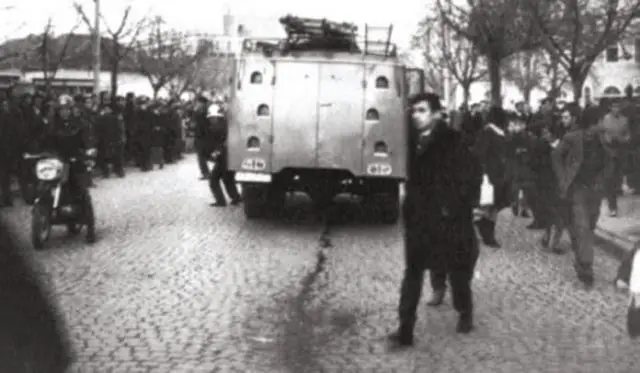
![“His capacity is quite low, he is not clear about the political situation, he only has two grades of school and has never held a book in his hand…”/The State Security document on Sulo Gradeci, Enver [Hoxha]’s escort, is revealed](https://memorie.al/wp-content/uploads/2025/11/Me-Sulo-Gradecin-ne-Dajt-350x250.jpg)

